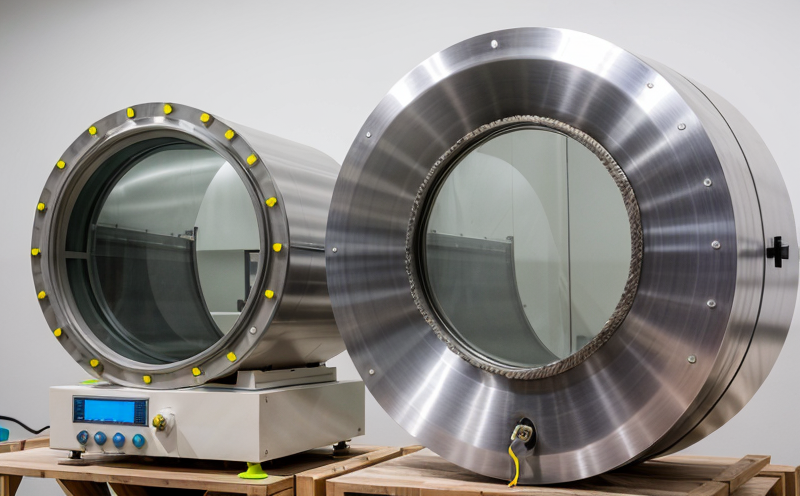ISO 4037-3 X and Gamma Radiation Shielding Testing
The ISO 4037 series of standards provides a framework for testing the shielding effectiveness of materials against ionizing radiation. Specifically, ISO 4037-3 addresses the determination of the half-value layer (HVL) and tenth-value layer (TVL) thicknesses for X-rays and gamma rays using transmission measurements.
The HVL is defined as the thickness of a material that reduces the intensity of radiation by one-half. The TVL, on the other hand, refers to the thickness required to reduce the radiation to 10% of its original intensity. These parameters are crucial for ensuring compliance with regulatory requirements and optimizing shielding design.
The testing process involves preparing a specimen cut from the material to be tested according to specified dimensions detailed in ISO 4037-3. The specimen is then placed between an X-ray or gamma radiation source and a detector, which measures the transmitted radiation. By adjusting the thickness of the specimen until specific transmission levels are achieved, HVL and TVL values can be determined.
The accuracy of these measurements depends on various factors including the calibration of the radiation source, the precision of the measurement equipment, and environmental conditions such as temperature and humidity. It is essential to conduct tests in controlled environments to ensure reliable results.
Once HVL and TVL values are obtained, they can be used to predict how effectively a given material will shield against ionizing radiation under different scenarios. This information is vital for industries that rely on radiation-sensitive processes or materials, such as healthcare facilities, nuclear power plants, and research laboratories.
For instance, in the medical field, accurate HVL and TVL data help ensure that diagnostic imaging equipment operates safely while minimizing patient exposure to harmful levels of radiation. In nuclear energy applications, these parameters are critical for designing containment structures that protect workers and the environment from radioactive leaks.
International Acceptance and Recognition
The ISO 4037-3 standard has gained widespread acceptance across numerous industries due to its rigorous methodology and international recognition. Many regulatory bodies worldwide reference this standard when establishing guidelines for radiation shielding materials.
Notably, the U.S. Nuclear Regulatory Commission (NRC) and European Union directives on radiation protection incorporate ISO 4037-3 as a key component of their compliance frameworks. Similarly, organizations like the International Atomic Energy Agency (IAEA) recommend this standard for use in member states.
By adhering to these international standards, manufacturers can ensure that their products meet global quality and safety benchmarks. This not only facilitates market access but also enhances brand reputation among clients who prioritize regulatory compliance.
Environmental and Sustainability Contributions
Radiation shielding materials play a significant role in protecting both people and the environment from harmful radiation emissions. By accurately determining the HVL and TVL of these materials through ISO 4037-3 testing, industries can minimize unnecessary exposure to ionizing radiation.
For example, healthcare facilities that use diagnostic imaging equipment must implement effective shielding strategies to reduce potential risks to patients and staff. Properly designed barriers based on HVL and TVL values help achieve this goal without compromising the quality of care provided.
In nuclear energy sectors, robust radiation shields are essential for preventing accidental releases of radioactive materials into the environment. Accurate ISO 4037-3 testing ensures that these structures meet stringent safety standards, thereby supporting sustainable practices in the industry.
The use of environmentally friendly materials in shielding design further contributes to sustainability efforts. Testing methods like ISO 4037-3 allow manufacturers to identify suitable alternatives with reduced ecological footprints while maintaining high levels of protection against radiation.
Use Cases and Application Examples
- Nuclear Power Plants: Ensuring containment integrity through precise HVL and TVL calculations for critical structures.
- MRI Machines: Minimizing patient radiation dose during diagnostic procedures by optimizing shielding materials.
- Cancer Therapy Centers: Safeguarding patients undergoing radiation treatments by validating shield efficacy.
| Application | HVL (mm Lead Equivalent) | TVL (mm Lead Equivalent) |
|---|---|---|
| Nuclear Reactor Containment Walls | 25 mm | 40 mm |
| MRI Machine Shielding Panels | 1.5 mm | 3 mm |
| Cancer Therapy Room Walls | 20 mm | 30 mm |





